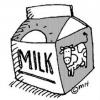Rb26 Engine Failure - Who's Fault?
Announcements
-
Similar Content
-
Latest Posts
-
By DatsunBanana · Posted
Drilled the rubber out on a slow speed and it didn't catch much at all. Probably only half a dozen holes was enough to shred the rubber and it dropped off easily leaving the inner sleeve behind. Will tackle that later -
I havent bought a manual cover for the dash yet and no cluster change, won't bother me too much, I just need to get that auto box gone, manual in! I miss my manual. 🤪. We started last weekend and managed to get the box out. Planning to start putting it in this weekend and then order a single piece tail. We were super careful to take time and not damage anything. It's my first time working under the car. With my S15 mainly worked in the bay. This time, it was a headache because of three or four bolts only. They simply didnt want to leave thei homr and the one securing the tailshaft, another above the GB, and the one securing the lipstick was a shit. Mates mate, Davo caught fire 🤣, nearly opened his chest up with a grinder 🤦🏽♂️ and both mates nearly had a plate from the box land and slit their head open. Fun times. We all survived. Not the easiest working with limited access on jackstands. As I'm sure we can agree these are the memories which make us love our car. For all three of us, was an awesome weekend and Sunday 3.30am before tools down was a fantastic effort. I need to upload pics, but looks like it needs to be via Url now. We used to be able to just upload pics back in the day. It's been that long! 🤪 Im currently spraying rustoleum under body, not because it's rusted. It's super clean, but just so it's protected for the next 10 years. There was a few surface rust spots. Which pretty much wiped off with a 3M scourer. Really impressed with how well the previous owner maintained it. Bank account went down so quick! Service, then GB - managed to get a spanking new 34 genuine box from Nissan. All the rest of the conversion parts from Kudos. Went with a Nismo short shifter. New pedals and Exedy Clutch and FW. Ordered the Prp Rear Main Retainer kit which should arrive Friday and my first engine mod part just like I did with my S15 will be the Tomei Expreme Turbo Outlet. Already on order. It'll likely sleep next to me on a pillow during the coming months. 🥰 Last build was on my JET200GT profile and on SAU and Hardtuned I had documented the build. Planning to try to do that again. Brands feel scarce now. Wish we still had ARC and Apexi parts readily available. Exhaust - need some advice on this. I had an Apexi exhaust on the S15 and loved the tone. My mate had a HKS HP Silent on his 33 and suggested I go with that to avoid drone. I can't remember hearing an RB25DET running that so will likely need to wait for a meet or something to hear it. Not after big power, just enjoy building it, and drivability with minimal negative attention.
-
Have a chat with Ben at Moore Performance or Jesse at JS Performance.
-
By DatsunBanana · Posted
Thanks both. All good advice. Reminds me of drilling through stone wall for drainage pipe 😬 I'll let you know how I get on if I still have use of my hands afterwards 😅
-








Recommended Posts
Create an account or sign in to comment
You need to be a member in order to leave a comment
Create an account
Sign up for a new account in our community. It's easy!
Register a new accountSign in
Already have an account? Sign in here.
Sign In Now